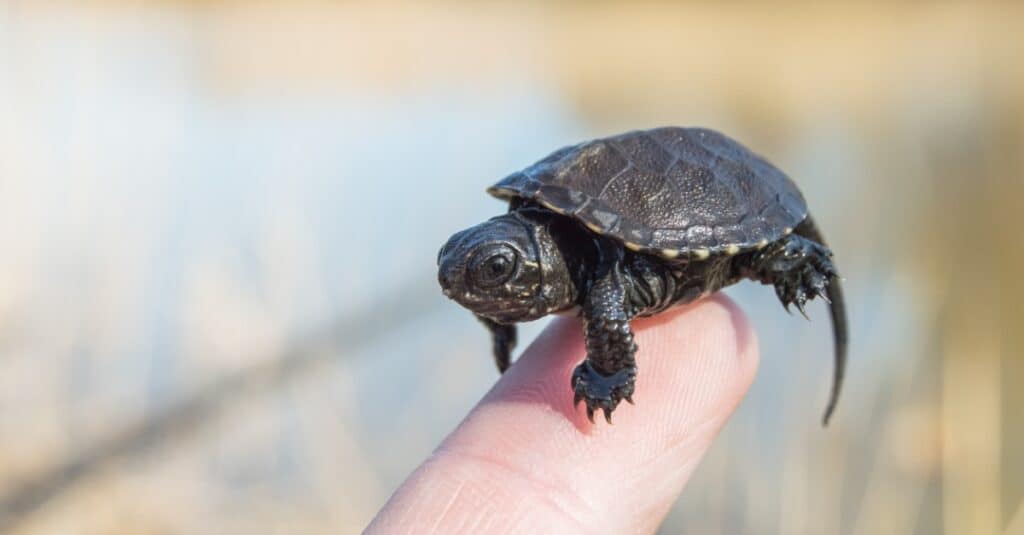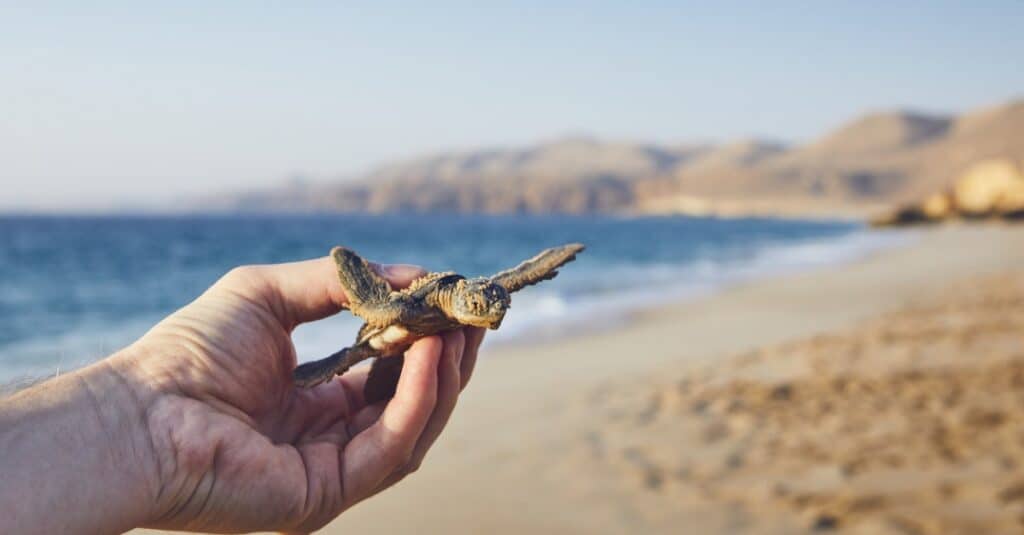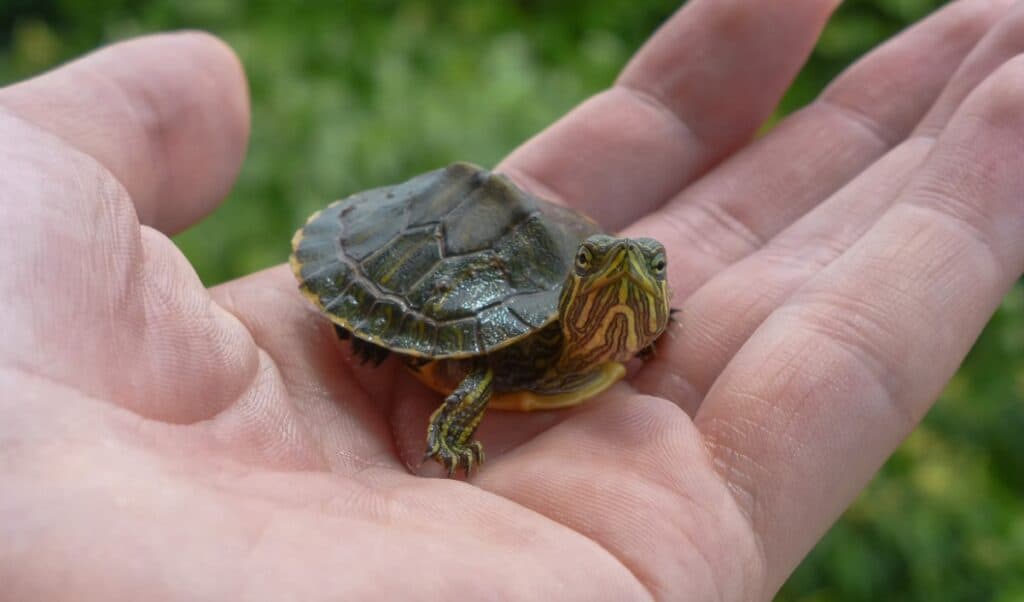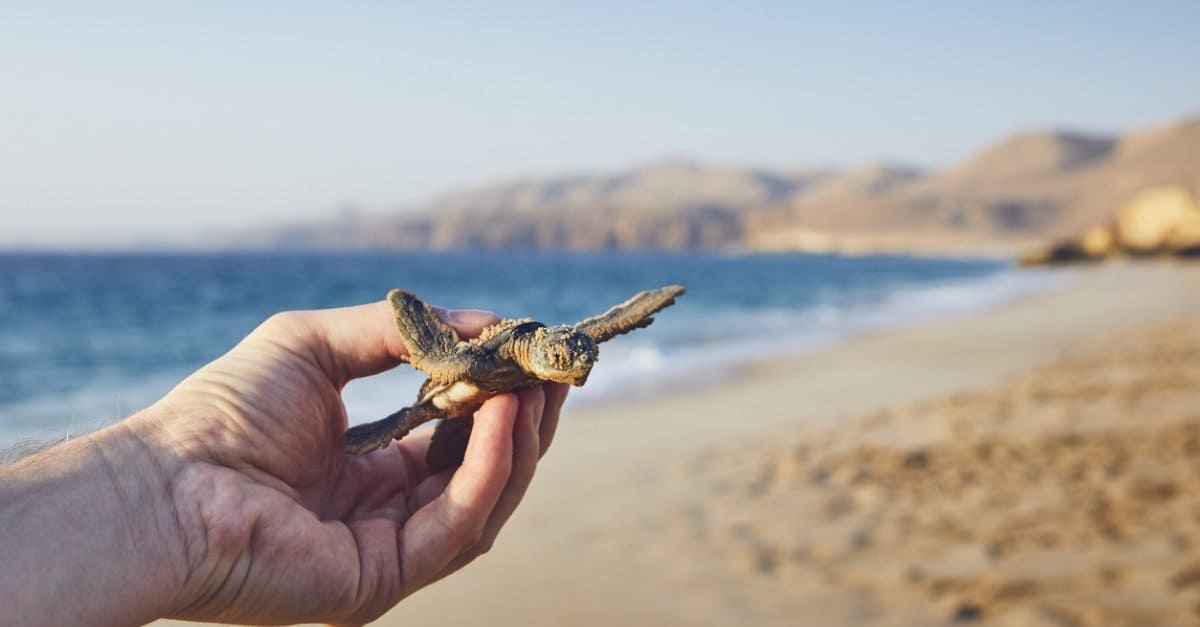Baby turtles are some of the cutest shelled animals on Earth. But did you know that they have teeth and that they raise themselves? There are so many interesting facts about turtle babies to learn, but here are our top five favorite ones!
#1: Baby Turtles Talk To Each Other Before They Even Hatch

Turtle hatchlings can communicate with one another before they hatch.
©iStock.com/Satria Tegar Wicaksono
I’m sure the first thing you think about when you think of baby turtle hatchlings is not how noisy they are. However, turtle babies have been said to be able to communicate well. They use these skills to work out a plan so that they can all hatch and meet together shortly after.
About 11 percent of unhatched turtle babies are able to talk to one another through their shells. They do this in order to make their debut in the ocean together, which greatly increases their survival rate. This is incredibly important because there are currently 7 species of sea turtles that are endangered and at risk for extinction.
#2: Hatchlings Lose Their Baby Teeth

Turtle babies typically incubate for around two to three months.
©iStock.com/Shidlovski
Baby turtles go through an incubation period, usually lasting 2 to 3 months, depending on temperature. The cooler the environment, the longer the incubation process takes. When the babies are finally ready to break free from their shell walls, they use what’s called an egg tooth on their beaks to break free.
Unlike humans, turtle hatchlings lose their egg tooth only one short hour after it was used to help them escape.
#3: Turtle Hatchlings Are Born Orphans

Baby
sea turtles
don’t have parents to depend on.
©iStock.com/Chalabala
Most animals are born and have at least one parent to teach them how to survive in the wild. When baby sea turtles are born, they have nothing but instincts and their environments to depend on. The odds are stacked against them, and unfortunately, only about 1 in 1,100 hatchlings will live to see their adult years.
After using all the strength in their tiny bodies, the hatchlings rest and regain their energy. This makes it possible to make the long and extremely dangerous trip to the sea.
#4: Baby Turtles Are Greatly Affected By Temperature

The incubation temperature determines the sex of turtle hatchlings.
©iStock.com/Riza Azhari
Temperature plays a huge role in a turtle hatchling’s life even before they’re born. While baby turtles are incubating, the temperature around them is what determines their sex. Baby turtles go through an incubation period, usually lasting 2 to 3 months, depending on temperature.
The warmer the eggs are kept, the more likely the babies are to be female. If the eggs were laid in an environment that may see both cool and warm temperatures, the hatchlings have an even chance of being male or female.
#5: Turtle Hatchlings Are Some Of The Oldest Babies In The World

Turtles as a species are over 230 million years old.
©iStock.com/Pablo Solís Fernández
Did you know that turtles as a species are over 230 million years old? This means they were roaming around with the dinosaurs!
The ancestors of the turtles we see today didn’t have just one tooth they would use to break free of their shells. They were born with a mouth full of teeth. While hatchlings used to be born with teeth, they weren’t always born with shells for protection. Thankfully, turtle hatchlings have a shell to keep them safe from predators.
Thank you for reading! Have some feedback for us? Contact the AZ Animals editorial team.








